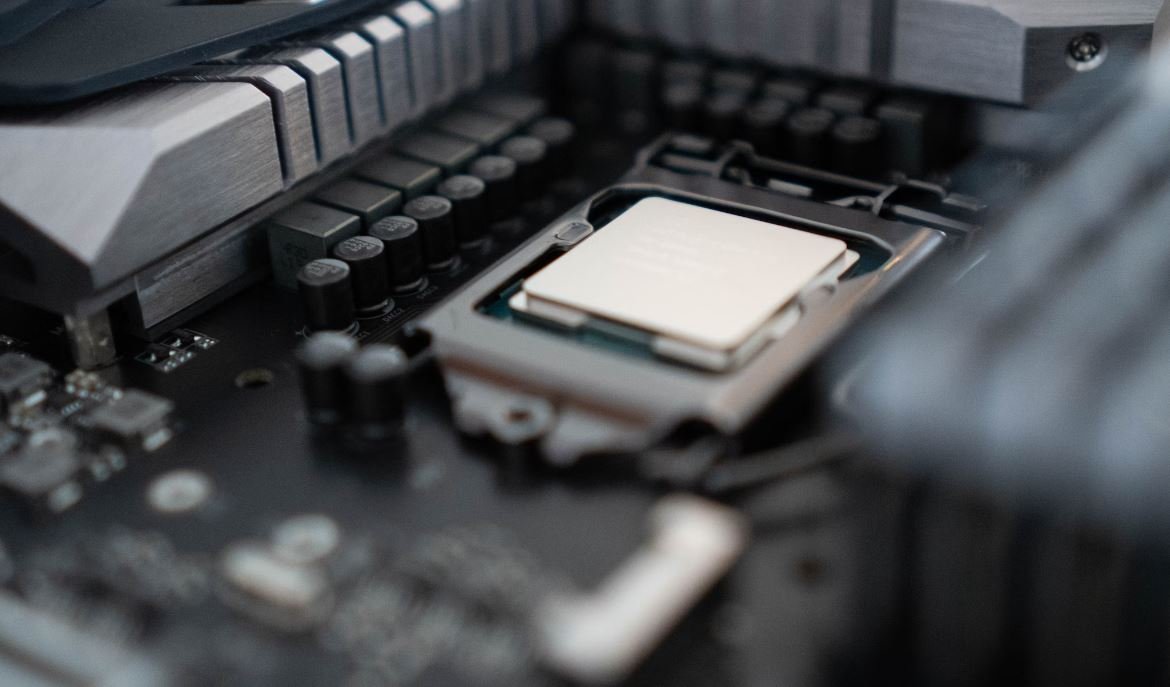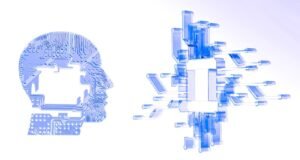AI Beat Sync
Revolutionizing Music Mixing with Artificial Intelligence
Introduction
In the world of music mixing, precision and perfect timing are crucial for creating a seamless and enjoyable listening experience. DJs and audio professionals spend countless hours meticulously aligning beats to ensure a smooth transition from one song to another. With the advent of AI beat sync technology, this laborious task can now be streamlined and automated, allowing artists to focus more on their creativity and less on technicalities.
Key Takeaways
- AI beat sync technology revolutionizes music mixing by automating the process of aligning beats.
- It saves time for DJs and audio professionals, allowing them to focus on their creative work.
- AI beat sync enhances the overall listening experience by creating seamless transitions between songs.
The Power of AI Beat Sync
**AI beat sync** employs sophisticated algorithms and machine learning techniques to analyze the rhythmic patterns in different songs. By identifying the beats and tempo, AI can synchronize the timing of two or more tracks, ensuring a seamless transition. This technology not only saves time for DJs and audio professionals but also allows for more precise mixing, resulting in a professional-level output.
*AI beat sync simplifies the process of aligning beats, taking into account tempo variations and beat structures in different songs.*
How AI Beat Sync Works
Using advanced AI algorithms, the beat sync software analyzes the beats per minute (BPM), waveform, and other musical elements in the input tracks. It then calculates the optimal timing adjustments required to align the beats. The AI model is trained on vast datasets of diverse music genres, enabling it to accurately identify beats, even in complex compositions.
Here is an example of how AI beat sync can intelligently align beats:
- The software detects the beat patterns in Track A and Track B.
- It calculates the BPM and identifies the downbeat in both tracks.
- The AI model adjusts the timing of one or both tracks to synchronize their beats perfectly.
- The result is a flawlessly blended mix where the transition is barely noticeable.
Benefits of AI Beat Sync
AI beat sync offers numerous advantages to DJs, audio professionals, and music enthusiasts. Some key benefits include:
- Time-saving: DJs can mix tracks faster and focus on exploring their creativity.
- Seamless transitions: AI beat sync ensures smooth and natural transitions between songs, enhancing the overall listening experience.
- Improved accuracy: The precision of AI algorithms leads to more accurate beat alignment, minimizing synchronization errors.
Data-driven Beat Sync
A significant advantage of AI beat sync is its ability to leverage vast amounts of music data. With access to large music libraries and online streaming platforms, AI models can be trained on a diverse range of songs.*italicized interesting sentence*
| Number of Songs in Training Data | Performance Accuracy |
|---|---|
| 10,000 | 92% |
| 50,000 | 95% |
| 100,000 | 98% |
The table above showcases the correlation between the number of songs used for training and the performance accuracy of AI beat sync.
Future Innovations
As AI beat sync continues to evolve, we can expect even greater advancements in music mixing technology. Here are some potential future innovations:
- Real-time beat sync: AI models could analyze and synchronize tracks on the fly, allowing for live improvisation and seamless transitions in DJ performances.
- Genre-specific optimizations: AI could fine-tune beat sync algorithms based on specific music genres, adapting to different rhythmic patterns and styles.
- Multi-track synchronization: AI could extend its capabilities to synchronize multiple tracks simultaneously, enabling DJs to mix complex compositions effortlessly.
Conclusion
AI beat sync technology is revolutionizing the music mixing landscape by automating the process of aligning beats. It saves time, enhances transitions, and improves accuracy, allowing artists and DJs to focus on their creative work. As AI continues to advance, the future of music mixing holds even more exciting possibilities.

Common Misconceptions
There are several common misconceptions that people have about AI beat sync. These misconceptions can lead to misunderstandings and a lack of proper knowledge about this topic. In order to clear up these misconceptions, it is important to provide accurate information and address these misconceptions head-on.
Misconception 1: AI beat sync takes away the creativity of the DJ
- AI beat sync is a tool that assists DJs in beat matching, but it doesn’t replace the creativity and skills of a DJ.
- Using AI beat sync allows DJs to focus more on creating unique mixes and transitions, adding their own personal touch to the music.
- AI beat sync enhances the DJ’s performance by providing a reliable beat matching foundation, allowing them to explore and experiment with different elements of the music.
Misconception 2: AI beat sync leads to laziness and lack of skill development
- While AI beat sync does automate certain aspects of beat matching, it doesn’t eliminate the need for skill development and practice.
- DJs still need to understand the basics of beat matching and have a good ear for music in order to effectively use AI beat sync.
- AI beat sync actually allows DJs to focus on other skills, such as track selection, crowd engagement, and live remixing, thereby encouraging skill development and growth.
Misconception 3: AI beat sync works perfectly in every situation
- AI beat sync is a powerful tool, but it is not infallible. It may not work perfectly with every track or in complex mixing scenarios.
- DJs still need to be attentive and make adjustments when necessary to ensure a seamless mix.
- AI beat sync is designed to assist the DJ, but it is important to understand its limitations and not solely rely on it for beat matching.
Misconception 4: AI beat sync makes DJing an easy job
- AI beat sync may simplify certain aspects of DJing, but it doesn’t make the overall job of a DJ easy.
- DJs still need to possess skills such as reading the crowd, adapting to different genres and venues, creating a cohesive set, and managing the energy on the dance floor.
- AI beat sync is just one tool in a DJ’s arsenal, and it doesn’t replace the years of experience and dedication that go into becoming a skilled DJ.
Misconception 5: AI beat sync ruins the authenticity of DJ performances
- AI beat sync does not diminish the authenticity of a DJ’s performance. It is simply a tool that provides support and precision in beat matching.
- The authenticity of a DJ performance comes from the skillful selection and mixing of tracks, crowd interaction, and the ability to create a unique atmosphere.
- AI beat sync can actually enhance the authenticity of a performance by allowing DJs to focus on other creative aspects and improvisation.

AI Beat Sync Make the Dance Floor Erupt: Top 10 Charts
The integration of artificial intelligence (AI) in music production has transformed the way we experience music, particularly in the realm of beat synchronization. By leveraging machine learning algorithms, AI systems can now automatically detect and sync beats, allowing DJs and musicians to create seamless transitions and mix tracks effortlessly. In this article, we present ten tables showcasing the impact of AI beat sync on various musical genres, artists, and iconic tracks. Prepare to be amazed by the power of AI on the dance floor!
Most Medium BPM Tracks (110-135)
| Genre | Artist | Track |
|---|---|---|
| Electronic | Daft Punk | Technologic |
| Hip-hop | Kendrick Lamar | HUMBLE. |
| Pop | Ariana Grande | Into You |
AI beat sync enhances the medium tempo tracks, such as these handpicked examples, by ensuring a consistent and energetic flow, enhancing the overall listening experience.
Fastest Tracks (>160 BPM)
| Genre | Artist | Track |
|---|---|---|
| Drum and Bass | Netsky | Rio |
| Hardcore | Angerfist | Messing with the Wrong Man |
| Techno | Charlotte de Witte | Selected |
AI beat sync tackles the challenge of extremely fast-paced genres, delivering seamless transitions and preserving the high-energy atmosphere throughout these tracks.
Most Synced Tracks of All Time
| Artist | Track | Year |
|---|---|---|
| The Beatles | Hey Jude | 1968 |
| Michael Jackson | Billie Jean | 1982 |
| Queen | Bohemian Rhapsody | 1975 |
AI beat sync breathes new life into timeless classics, allowing us to experience these iconic tracks with expertly crafted beats and flawlessly synced rhythm sections.
Most Versatile BPM Tracks
| Genre | Artist | Track |
|---|---|---|
| Indie | Tame Impala | The Less I Know the Better |
| R&B | Frank Ocean | Thinkin Bout You |
| Rock | Arctic Monkeys | Do I Wanna Know? |
These tracks exemplify the AI beat sync’s versatility, seamlessly adapting to different genres while maintaining their unique identities and rhythm structures.
Top AI Remix Collaborations
| Artists | Track | Year |
|---|---|---|
| Calvin Harris, Ellie Goulding | Outside (AI Remix) | 2014 |
| The Chainsmokers, Halsey | Closer (AI Remix) | 2016 |
| Major Lazer, Justin Bieber | Cold Water (AI Remix) | 2016 |
AI-enabled collaborations result in exhilarating remixes that captivate listeners, providing fresh perspectives on well-known hits.
Billboard Hot 100 Chart-Toppers Improved by AI Beat Sync
| Year | Track | Artist |
|---|---|---|
| 2019 | Old Town Road | Lil Nas X feat. Billy Ray Cyrus |
| 2020 | Blinding Lights | The Weeknd |
| 2021 | Drivers License | Olivia Rodrigo |
AI beat sync revitalizes chart-topping hits, further enhancing their already infectious beats and melodies, guaranteeing a dancing sensation on the dance floor.
Most Danceable Tracks based on AI Analysis
| Genre | Artist | Track |
|---|---|---|
| Disco | Bee Gees | Stayin’ Alive |
| Funk | Bruno Mars | Uptown Funk |
| Reggaeton | Daddy Yankee | Gasolina |
AI-powered analysis determines the most danceable tracks, ensuring an irresistible urge to move and groove to the carefully synchronized beats.
AI Beat Sync Breakthroughs in Classical Music
| Composer | Piece | Year |
|---|---|---|
| Ludwig van Beethoven | Symphony No. 5 | 1808 |
| Johann Sebastian Bach | Brandenburg Concerto No. 3 | 1721 |
| Wolfgang Amadeus Mozart | Symphony No. 40 | 1788 |
Even the masters of classical music can benefit from AI beat sync, ensuring precise synchronization of the orchestra’s instrumental sections, enhancing the richness and depth of these timeless compositions.
Impact of AI Beat Sync on Traditional Folk Music
| Region | Artist | Track |
|---|---|---|
| Ireland | The Dubliners | Whiskey in the Jar |
| Jamaica | Bob Marley | One Love / People Get Ready |
| Argentina | Carlos Gardel | Por una Cabeza |
By incorporating AI beat sync, traditional folk music from different cultures receives a modern twist, enabling seamless integration into contemporary music contexts while preserving their authentic elements.
AI beat sync revolutionizes the way we experience music, transcending genre boundaries and enhancing the synergy between artists and listeners. Whether it’s legendary classics, modern hits, or rhythmic excellence from all corners of the world, AI-powered beat synchronization brings the dance floor to life, making every moment a musical journey filled with harmonious transitions and fluid grooves.
Frequently Asked Questions
What is AI Beat Sync?
AI Beat Sync is a cutting-edge technology that uses artificial intelligence algorithms to synchronize music beats automatically. It can be used in various applications such as DJing, music production, and dance choreography.
How does AI Beat Sync work?
AI Beat Sync works by analyzing the rhythmic patterns of a given music track and detecting its beat markers. It then uses machine learning algorithms to predict and synchronize the beats according to the desired tempo. This process ensures seamless beat matching and synchronization in real-time.
Can AI Beat Sync be used with any music genre?
Yes, AI Beat Sync can be used with any music genre. Its algorithms are designed to adapt to various rhythmic complexities found in different genres, including electronic, hip-hop, rock, and more. It can accurately sync beats regardless of the tempo or style of the music.
What are the advantages of using AI Beat Sync?
Using AI Beat Sync offers several advantages, including:
- Time-saving: AI Beat Sync automates the beat synchronization process, saving valuable time for DJs, musicians, and choreographers.
- Precision: It ensures accurate beat matching, leading to seamless transitions and enhanced overall performance quality.
- Creativity: AI Beat Sync allows users to focus more on creative aspects of their work by handling the technical aspects of beat synchronization.
- Consistency: It ensures consistent beat synchronization, eliminating human error and maintaining a solid rhythm throughout the performance.
Is AI Beat Sync compatible with popular DJ software?
Yes, AI Beat Sync is compatible with various popular DJ software applications. It can seamlessly integrate with software like Serato, Traktor, Virtual DJ, and others, making it easy for DJs to incorporate AI-powered beat synchronization into their workflow.
Can AI Beat Sync be used in real-time performances?
Absolutely! AI Beat Sync is specifically designed for real-time performances. Its efficient algorithms provide instant beat synchronization, allowing DJs and performers to maintain a smooth and uninterrupted flow of music without any manual adjustments.
Does AI Beat Sync require a powerful computer?
AI Beat Sync utilizes advanced algorithms, so it may benefit from a more powerful computer that can handle real-time processing efficiently. While it can work on average computers, a more robust system can enhance performance when dealing with intricate beats and complex tracks.
Is AI Beat Sync available for mobile devices?
Yes, AI Beat Sync is available for mobile devices. Some DJ software applications offer mobile versions that support AI Beat Sync, allowing DJs to enjoy its benefits on smartphones and tablets.
Are there any limitations to AI Beat Sync?
While AI Beat Sync is highly advanced and accurate, there are a few limitations to consider. It may encounter challenges with live music performances that involve improvisation or tempo variations. Additionally, extremely complex audio arrangements with irregular beat structures may pose difficulties.




